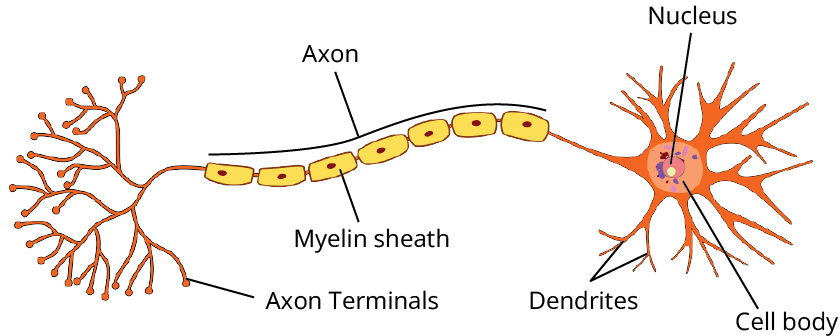How Can Tissues Class 9 Questions and Answers Help You Prepare for Exams?
NCERT Solutions For Class 9 Science Chapter 6 Tissues (2025-26)
FAQs on NCERT Solutions For Class 9 Science Chapter 6 Tissues (2025-26)
1. What are the main types of plant tissues described in NCERT Solutions for Class 9 Science Chapter 6?
Plant tissues in Class 9 Science Chapter 6 are categorised as:
- Meristematic tissues: Responsible for growth, found at root and shoot tips.
- Permanent tissues: Formed from meristematic tissues and include simple permanent tissues (parenchyma, collenchyma, sclerenchyma) and complex permanent tissues (xylem, phloem).
2. According to NCERT Solutions for Class 9 Science Chapter 6, how is complex tissue different from simple tissue in plants?
Simple tissues consist of one type of similar cells that perform the same function (e.g., parenchyma, collenchyma). In contrast, complex tissues are made of more than one type of cell working together for a common function (e.g., xylem and phloem).
3. How are animal tissues classified in the NCERT Solutions for Class 9 Science Chapter 6?
Animal tissues are classified into four main types:
- Epithelial tissue: Covers body surfaces and lines organs.
- Connective tissue: Supports and binds other tissues (e.g., bone, blood).
- Muscular tissue: Responsible for movement.
- Nervous tissue: Conducts nerve impulses for communication.
4. What is the function of the epidermis in plants as per NCERT Solutions for Class 9 Science Chapter 6?
The epidermis acts as a protective outer layer, preventing water loss, mechanical injury, and infection. It also helps absorb water in roots and may secrete a waxy cuticle for extra protection.
5. What are the components of xylem tissue, according to the NCERT Solutions for Class 9 Science Chapter 6?
Xylem tissue is made up of tracheids, vessels, xylem fibres, and xylem parenchyma. These elements cooperate to conduct water and minerals from roots to other parts of the plant.
6. Why is the division of labour in multicellular organisms important, as discussed in NCERT Solutions for Class 9 Science Chapter 6?
Division of labour means differentiation of tissues so that different cell groups handle specific tasks. This increases efficiency, survival, and proper functioning in multicellular organisms because specialised tissues can perform functions faster and more efficiently than generalised cells.
7. How does cardiac muscle tissue differ from other muscle tissues, based on Class 9 Science NCERT Solutions Chapter 6?
Cardiac muscle tissue:
- Is involuntary, found only in the heart.
- Fibres are branched and uninucleate.
- Show rhythmic contraction and relaxation for continuous pumping of blood.
- Differs from striated (skeletal) muscle, which is voluntary and multinucleated, and smooth muscle, which is unstriated and found in organs.
8. What role do stomata play in plants, according to the NCERT Solutions for Class 9 Science Chapter 6?
Stomata are tiny pores mainly on leaf surfaces. They help in the exchange of gases (O2 and CO2) and also facilitate transpiration (loss of water vapour) in plants.
9. What are the main functions of areolar tissue in animals as given by Class 9 Science NCERT Solutions Chapter 6?
Areolar tissue:
- Fills the space between organs and tissues.
- Supports internal organs.
- Helps in tissue repair after injury.
- Binds skin to muscles and surrounds nerves and blood vessels.
10. How are simple permanent tissues such as parenchyma, collenchyma, and sclerenchyma different, based on their cell wall structure?
- Parenchyma: Thin cell walls, loosely packed cells.
- Collenchyma: Cell walls thickened at corners due to cellulose and pectin.
- Sclerenchyma: Uniformly thickened, lignified cell walls with little or no intercellular space.
11. What if meristematic tissues did not exist in plants? (FUQ)
Without meristematic tissues, plants would be unable to grow or repair themselves, as these tissues enable cell division at growing tips of roots and shoots, supporting new organ formation and healing after damage. Absence would halt all growth and regeneration processes.
12. How do tissues contribute to higher order structure and function in multicellular organisms? (FUQ)
Tissues group together to form organs, which then compose organ systems. This hierarchy creates complexity, allowing multicellular organisms to perform specialised functions (e.g., digestion, movement, sensing environment) efficiently. Loss of tissue-level organisation would reduce complexity and survival chances.
13. What misconceptions do students often have about the function of nervous tissue? (FUQ)
Common misconceptions:
- Assuming nervous tissue only exists in the brain (it also forms nerves and spinal cord).
- Thinking it transmits signals via moving cells (actual transmission is chemical and electrical across stable neuron structures).
- Believing all nervous tissue responds to pain (some neurons only relay other signals).
14. How would you apply the knowledge of tissue types to understand diseases or injuries in humans? (FUQ)
Different tissue types are susceptible to specific diseases/injuries: e.g.,
- Damage to nerve tissue leads to paralysis or loss of sensation.
- Connective tissue disorders affect bones, blood, or fat storage.
- Muscle injuries affect movement.
- Understanding tissue roles helps in diagnosis and targeted treatment.
15. Why is learning about tissues in Class 9 essential before studying human organ systems? (FUQ)
Understanding tissues is fundamental because every organ and system (e.g., digestive, respiratory, nervous) is built from specific tissue types, each performing specialised roles. This base knowledge prepares students for deeper anatomical and physiological lessons in later classes as per CBSE 2025–26.














 Watch Video
Watch Video


















